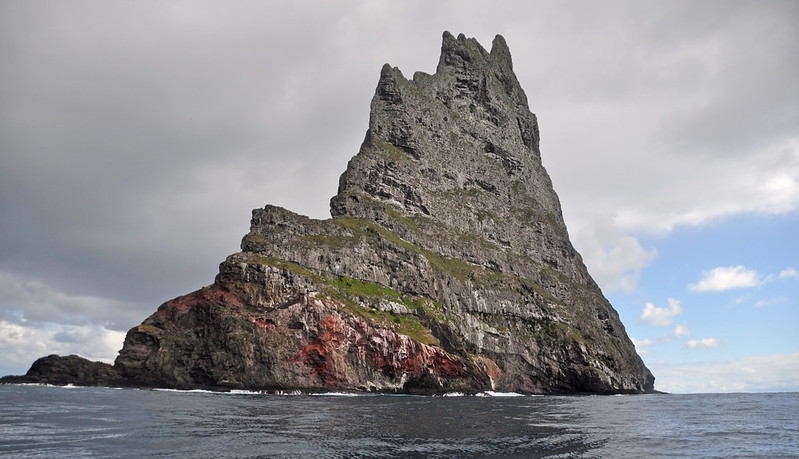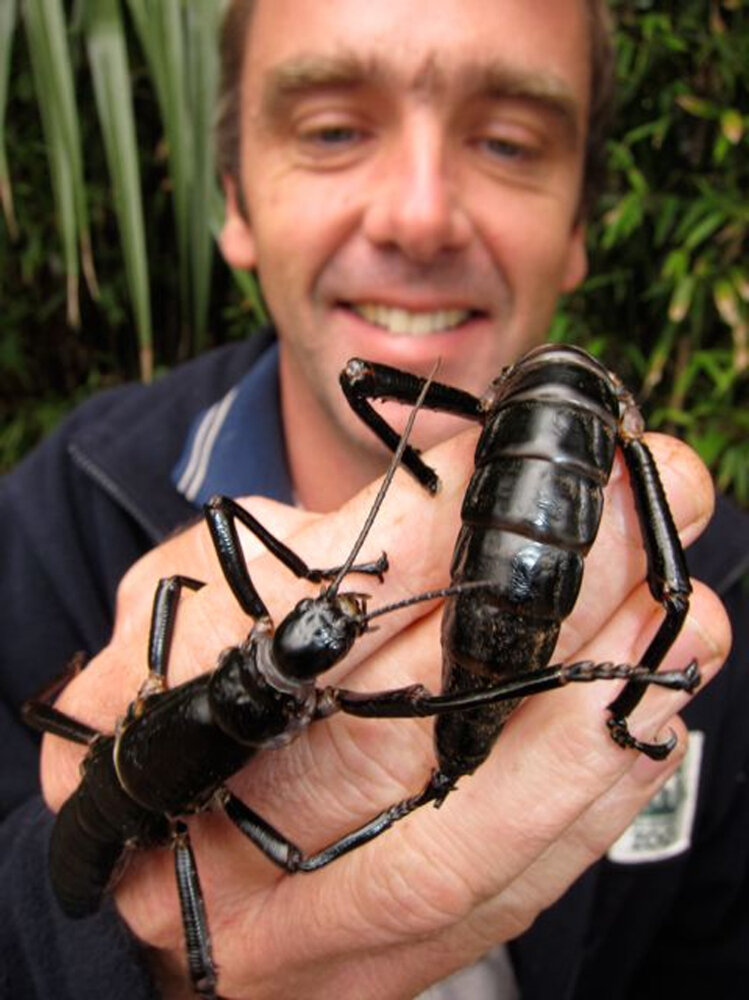Balls Pyramid is a reef knot, stone remnants of shield volcano and crater is a Lord Howe Island 20 kilometers to the southeast. It is 562 meters tall while only 1,100 meters long and 300 meters wide, making it the tallest volcanic remnant rock in the world. Ball's Pyramid is located 643 km northeast of Sydney in Lord Howe Island Marine Park.
 |
| Balls pyramid |
Ball's Pyramid
Steep, eroding, and formed 6.4 million years ago, Balls Pyramid sits at the center of the continental shelf and is surrounded by rough seas that make any approach to the ball island very difficult.
Ball pyramid — This rocky island is named after Royal Navy Lieutenant Henry Lidgbird Ball, who reported its discovery in 1788. It was also during this voyage that he also reported the discovery of the island. Lord Howe. Henry Wilkinson, a geologist from the New South Wales Department of Mines in 1882, is believed to be the first to arrive ashore.
Image / Source
 |
| Ball's pyramid island |
Ball island
Like Lord Howe Island and Lord Howe's Subterranean Mountains, Ball's Pyramid is also located on Lord Howe Ridge and is part of the continent of Zealandia. Around it is several small satellite islands. Located approximately 800m west-northwest of the island, located approximately 800m west-northwest of the island, Observatory Rock and Wheatsheaf arelets.
The shelf is 20 kilometers long and 10 kilometers wide on average and lies at an average depth of 50 meters above sea level. It is separated by a 500 meter-deep underground gorge and another shelf, where Lord Howe Island is located. The walls of the Remnant Block continue to extend below the surface of the water until the shelf.
 |
| Balls pyramid Australia |
Image / Source
 |
| Rock climbing balls |
Image / Source
 |
| Ball pyramid |
Image / Source
 |
| Pyramid ball |
Image / Source
 |
| Balls pyramid |
Image / Source
Insect Balls
Ball's pyramid stick insect
 |
| Climbing the pyramids |
The world's rarest insect
Dryococelus australis is a stick insect or tree lobster, species that live in the Lord Howe Island Group. It is considered the rarest insect on our planet. It is the only monotypic member of Dryococelus and was thought to have died out by 1920. However, it was rediscovered in 2001. It has been extincted from Lord Howe Island, its largest habitat. The rediscovered population of 24 individuals was located on Ball's Pyramid.
 |
| Balls pyramid insect |
Balls pyramid insect — Stick insects were once common on Lord Howe Island. They were used to baitfish. It was believed that they became extinct after the supply ship SS Makambo ran aground in 1918 on Lord Howe Island, allowing black rats the opportunity to establish themselves. Stick insects were not found after 1920. In 1964, however, a group of climbers visited Ball's Pyramid and climbing pyramid, 23 km southeast of Lord Howe Island and found dead stick insect. When climbers climbing balls pyramid they discovered few more dead insects in subsequent years but failed to locate any live specimens.

No comments:
Post a Comment